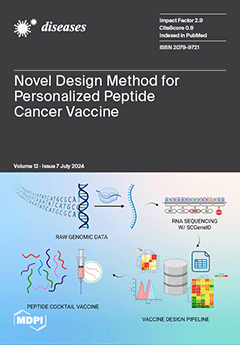Introduction: In the United States, a total of 268,490 men were found to have prostate cancer in 2022, thus making it the most common cancer in men, accounting for 27% of all cancers in the male population. Among all cancers in men, it
[...] Read more.
Introduction: In the United States, a total of 268,490 men were found to have prostate cancer in 2022, thus making it the most common cancer in men, accounting for 27% of all cancers in the male population. Among all cancers in men, it was the fifth leading cause of death, with 34,500 deaths and a mortality rate of 11%. In 2019, the total number of cases was 94,748, making it the leading cancer in males, accounting for 11% of all male cancers. In terms of mortality, it ranked seventh, with 13,217 deaths and a mortality rate of 1.6%. However, new treatment options for metastatic castration-sensitive prostate cancer (mCSPC) have emerged. Docetaxel has been shown to be effective for both mCSPC and castration-resistant prostate cancer (CRPC). Upfront docetaxel has not been approved in Japan, nor has it been validated in large-scale studies. Furthermore, several agents can be used after docetaxel treatment, but it is unclear which is the most effective. We used a large Japanese health insurance database to determine which agent would be the most effective as a next-line therapy in patients who had received docetaxel. Materials and Methods: We used data from medical institutions using the Diagnosis Procedure Combination (DPC), which provides a comprehensive evaluation of medical classifications. The Medical Data Vision database covers approximately 23% of DPC hospitals in Japan. This study analyzed 2938 patients with mCSPC who received docetaxel, followed by CRPC, between April 2008 and December 2021. The study focused on three agents: enzalutamide, abiraterone acetate, and cabazitaxel. Other agents were excluded due to the small number of patients. The following data were analyzed: age, date of CRPC diagnosis, presence of bone metastasis, drug type, and prognosis. Results: This study included 1997 patients with CRPC after upfront docetaxel therapy for mCSPC (enzalutamide [ENZ] group, n = 998; abiraterone acetate [ABI] group, n = 617; and cabazitaxel [CBZ] group, n = 382). The overall survival (OS) time from drug initiation was 456 days in the enzalutamide group, which was significantly longer than that in the cabazitaxel group (
p = 0.017, HR 0.94) (ENZ: ABI
p = 0.54, HR 0.94; ABI: CBZ
p = 0.14, HR 0.75). OS was also compared for the third-line drug in the group that received enzalutamide as the second-line drug, the group that used abiraterone acetate as the third-line drug (ENZ-ABI group), and the group that used abiraterone acetate as the second-line drug. OS from the start of the third-line drug was compared between the ENZ–ABI group and the ABI–ENZ group, which received enzalutamide as the third-line drug, but showed no significant difference (269 vs. 281 days,
p = 0.85; HR 1.03). Conclusion: ENZ was shown to prolong OS relative to cabazitaxel after the cessation of docetaxel. ENZ was associated with a longer duration of drug use than ABI and CBZ.
Full article






